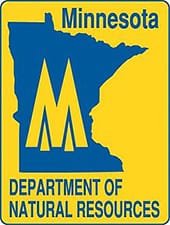by Andy Carlson, DNR Fisheries Research Scientist


St. Paul, MN -(Ammoland.com)- Q: How can I tell when a lake has turned over in the fall, and do most fish go deeper after turnover?
A: A lake has turned over when water temperatures are the same from the surface to the bottom. The process can take days or even months to complete, depending on lake shape and depth, and air and water temperatures.The only way to conclusively know when a lake has turned over is to measure the temperature at the surface of the lake and at the bottom; if they are roughly the same temperature (within a few degrees), the lake has turned over. During the process of turnover water clarity may decrease, decaying organic material can be seen suspended in the water and there can be a sulfurous odor.
Before lakes turn over in the fall, temperature and oxygen may vary across depths. In these lakes, the waters below a certain depth may become oxygen-deficient during the summer. When this happens, fish cannot use this habitat and are squeezed into waters near the surface.After the lakes turn over, the oxygen levels are consistent from the surface to the bottom, and fish can use depths that were uninhabitable during the summer.
Studies of walleye, northern pike, muskellunge, and cisco that were tagged with depth sensors have verified that these species use deeper depths after turnover.
About the Minnesota Department of Natural Resources (MNDNR)
The Minnesota Department of Natural Resources is the agency of the U.S. state of Minnesota charged with conserving and managing the state’s natural resources. The agency maintains areas such as state parks, state forests, recreational trails, and recreation areas as well as managing minerals, wildlife, and forestry. The agency is currently divided into sections Ecological Resources, Enforcement, Fish & Wildlife, Forestry, Lands and Minerals, Waterways, Parks and Trails, and Waters.
